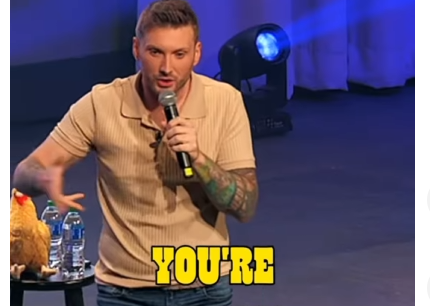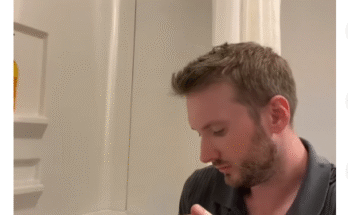🎙️ “I’m Here to Help!”: Comedy’s Most Dangerous Promise 😂
In the world of #standupcomedy, few phrases carry as much inherent comedic danger as, “I’m here to help…” When a comedian, especially one skilled in #improv and #crowdwork like #MattMath, utters those words, it’s not a genuine offer of assistance—it’s the start of an improvised verbal ambush. The audience knows they’re about to witness a well-intentioned life or relationship problem be dismantled, analyzed, and solved with the brutal logic of pure comedy.
The Setup: Identifying the “Victim”
The beauty of this setup is how the comedian selects their target. The person being “helped” usually hasn’t asked for it. The interaction often begins innocently:
- “What do you do for a living?”
- “Oh, you’re an accountant? And you look stressed. Tell me a problem you need help with.”
- “You came with your wife? Perfect! What’s the one thing she does that drives you crazy? Don’t worry, I’m here to help.”
The comedian uses their mastery of crowdwork to turn a spotlight onto a specific, relatable flaw or frustration in the audience member’s life. The audience member thinks they are sharing a minor grievance; the comedian sees a goldmine of universally funny material.
The Comedian’s Solution: Brutal, Hilarious Logic
The comedian’s “help” is always the opposite of practical. It often involves:
- Exaggeration: Taking the minor problem (e.g., “My husband leaves the toothpaste cap off”) and inflating it into a sign of deep moral failure and global crisis (“He’s not just lazy; he’s actively undermining Western hygiene standards!”).
- Absurdity: Offering a solution that is logistically insane or legally dubious (“To solve the toothpaste issue, you need to hide all toothbrushes and introduce a complex bartering system where he earns the right to brush by completing five manual labor tasks a day.”).
- Relatability Pivot: Once the comedian has thoroughly roasted the audience member, they pivot to a universal truth. The audience laughs not just at the person being helped, but at the realization that their life is just as ridiculous.
This kind of interaction relies heavily on improv skills. The comedian doesn’t just deliver a punchline; they build a mini, personalized comedy special on the spot. They have to listen intently, process the information instantly, and volley it back with escalating humor, all while maintaining a playful, non-malicious tone.
Why the Audience Loves the Ambush
The “I’m here to help” dynamic works because it breaks the fourth wall and injects genuine, unscripted energy into the performance.
- Shared Vulnerability: The audience member bravely (or foolishly) offers up a piece of their real life, and the collective experience of watching it get hilariously dismantled is cathartic.
- The Element of Danger: Everyone in the room is thinking, “Thank goodness it’s not me,” while simultaneously hoping the conversation gets even more outrageous.
- Proof of Skill: When a comedian pulls off this spontaneous exchange seamlessly, it proves they are a master of their craft—a true performer capable of turning any sentence into a laugh riot.
Ultimately, the phrase “I’m here to help” in a comedy club is a brilliant piece of misdirection. It’s the comedian’s way of saying, “Prepare to laugh at your own life problems,” and thanks to their skill, the audience happily accepts the assistance.


